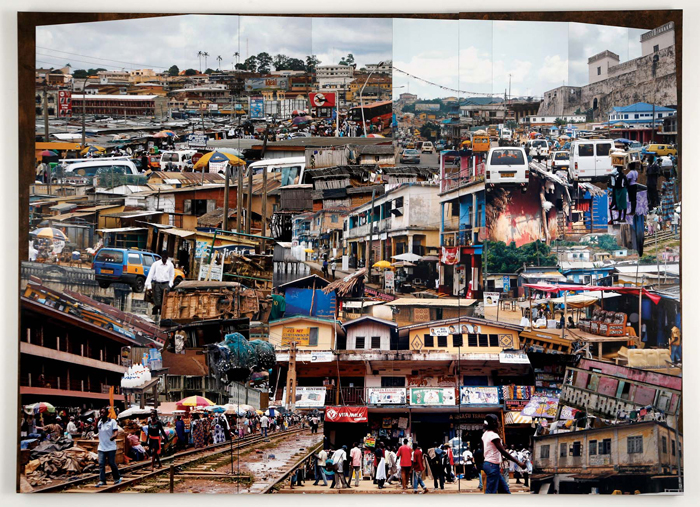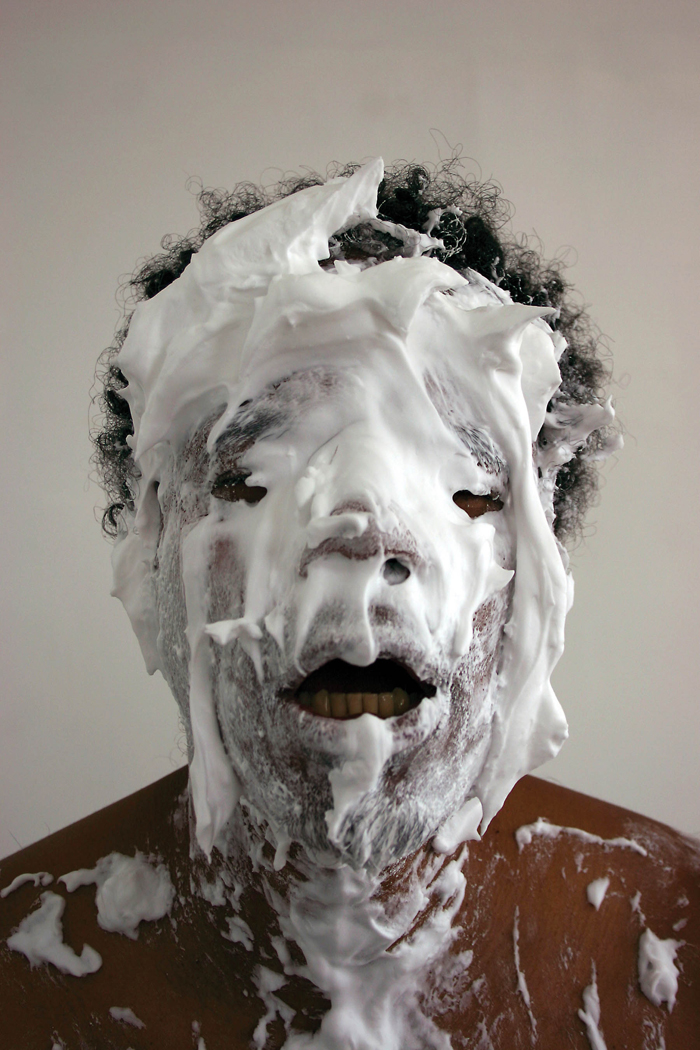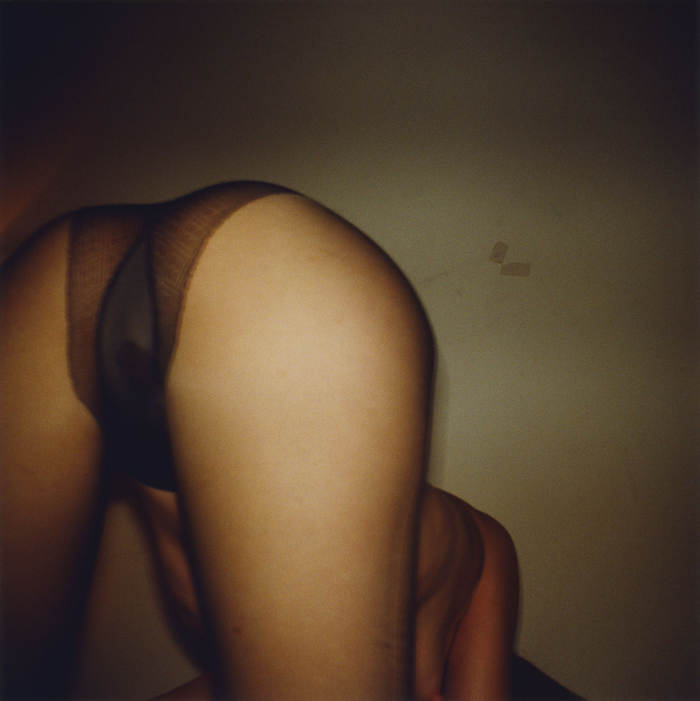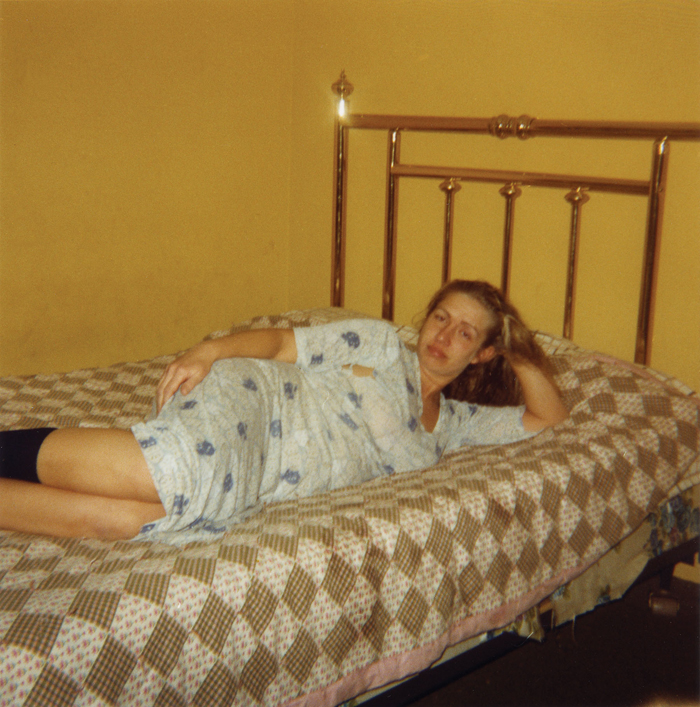
Kyungmi Shin, Africa High Rise, 2008. Photo collage, 8 x 12 ft.
I am immediately transported to another place while viewing Africa High Rise. Is the image about to explode or implode? I can’t tell. Perhaps it is on the verge of both, buckling under its own weight, shifting on its invisible tectonic plates. As I look, my eye has developed a mind of its own quite apart from my brain, lagging behind, engrossed in the game of meaning, as my gaze wanders across this image, dancing, stopping and stuttering to the polyrhythmic pulses of the pictures.
I see places and scenes familiar to me yet they appear completely new in this collage. I am reminded of the chaotic and indescribable beauty I frequently encounter on my travels to Accra and Kumasi, Ghana. I can almost smell this photo collage, and feel the damp heat on my skin.
It remains fresh every time I lay my eyes on it.
Todd Gray, Artist

Todd Gray, Shaman Series 4/16/05 11:04:19, 2005. Archival pigment print, 18 x 12 in.
The power of this image, for me, is in the discomfort of encountering a grotesque figure. Like looking at the Elephant Man, I am repulsed and fascinated by the image. I am embarrassed by my fascination, but I can’t take my eyes off the image. The additional layer of strangeness comes from the fact that the man behind the white foam is my husband, transformed into an unknown creature.
The photograph also makes me think about what it means to be a “cultured” man. Shaving cream, ordinarily used to remove unruly facial hair, is used here to sculpt beastly features. It is a portrait as an inner landscape, an expression of the hidden angst and perhaps the desire to be free from cultural decorum. Is the white foam a stand-in for the white dominant culture encasing the “colored” body? Is the foam suffocating the subject? Or is it disfiguring and misrepresenting the figure? Is it protecting the figure, or is the figure hiding behind it?
Kyungmi Shin, Artist

Todd Hido, #8485-A, 2009. Photo first appeared in S Magazine, no. 9, 2009.
Considering Linda Williams’s concept of the “frenzy of the visible,” which locates desire within the “involuntary confessions” of the body, I find myself totally enthralled with this image of a woman hinged over exposing her backside, revealing the leakage that seeps from her crotch. The image calls to mind Hans Bellmer’s erotic drawings of women in similar poses ready and desiring to be forcefully taken. The only difference here is the proximity of the artist to the model: the cropping and the flash that illuminates the aroused subject tell us that the photographer is standing very near. The compositional tactics, which place the subject in the viewer’s space, are reminiscent of Caravaggio’s paintings, but instead of Christ as the ecstatic subject, an anthro oozing bum projects her wares (slang intended). The wet spot on her stockings tells us that she derives pleasure from this encounter and that the action of bending over, exposing her veiled privates, stimulates her. My world of references delectably opens up and allows me to ingest the model in all her charged animality. The shadowy space reveals just one other potent mark–the tape on the wall–half there, half not. The X that designates her position is effaced and she prostrates herself in lieu of its supposed confines.
Tricia Lawless Murray, Artist

Rephotographed by Todd Hido, Untitled # 2236 from the series Ohio, circa 1979. Chromogenic print, 8 x 8 inches.
There was a night when I was young, maybe ten years old? My father had come home drunk, and had woken us all up. That night, something I witnessed stayed with me: a glimpse of my mother through the wide open door of my parents’ bedroom. She was wearing her torn nightgown and a single sock, posing suggestively for my father as he took her picture.
Years later, I found my father’s picture from that night in a stack of discarded snapshots in our junk drawer. It was like something out of a “Reader’s Wives” section in a porno mag. That’s definitely where this kind of image comes from.
Somehow we have moments saved forever in that drawer that you’d think a family wouldn’t want to remember. The photo remained there for years and years. Occasionally, it would migrate to the top of the drawer. I’ve since swiped it.
The photo corroborates what I remember of that night–she wasn’t happy about having her picture taken. Her reluctant complicity is there in her pose.
It was a picture I did not take, but somehow it’s a faded gateway into my work.
Todd Hido, Artist
